Sum-it Card Game
‘Sum-it’ Card Game published by Sum-It Card Games Ltd. c.1935.
Sum-it Card Game is an educational game designed by Norman D. Vine and published by Sum-It Card Game Ltd., Leeds (UK), c.1935. Norman D. Vine was later to become the Lord Mayor of Leeds. The first aeroplane flight over Mount Everest was in 1933 and this is what is depicted on the box and early backs of the cards. It seems highly likely that the game was named after this feat so maybe it was first published in around 1933 or 1934.
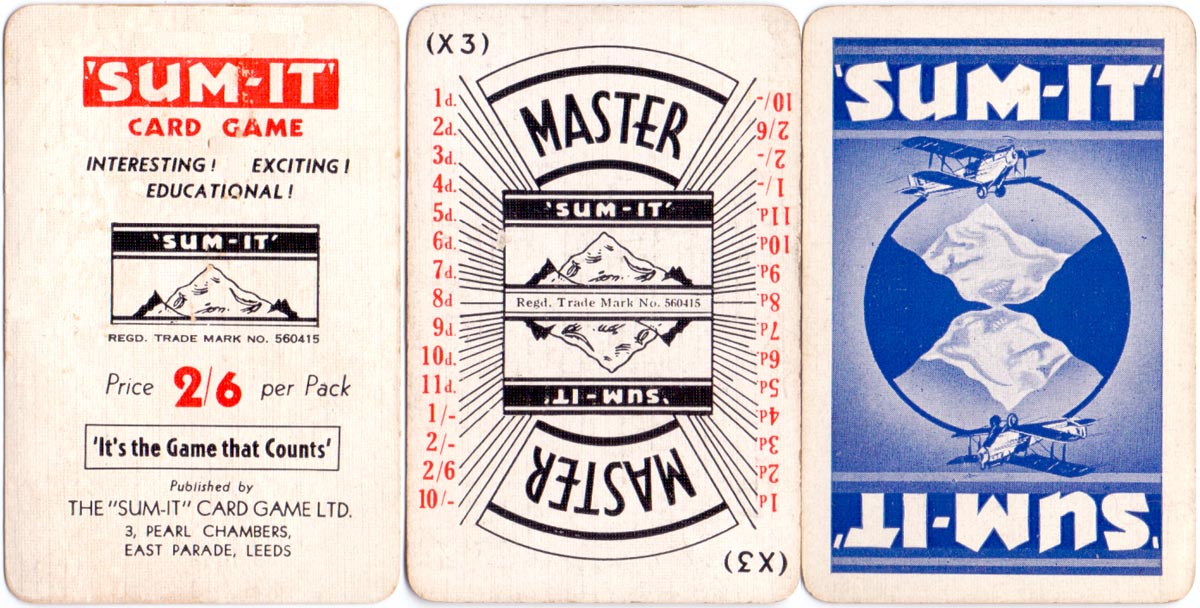
Above: the title card describes the game as “interesting, exciting and educational”. The ‘Master’ card is a sort of wild card which can be used as any value. The image of a bi-plane flying over high mountains evokes the sense of awe and wonder associated with adventure, maybe reminiscent of the 1933 British Mount Everest expedition.
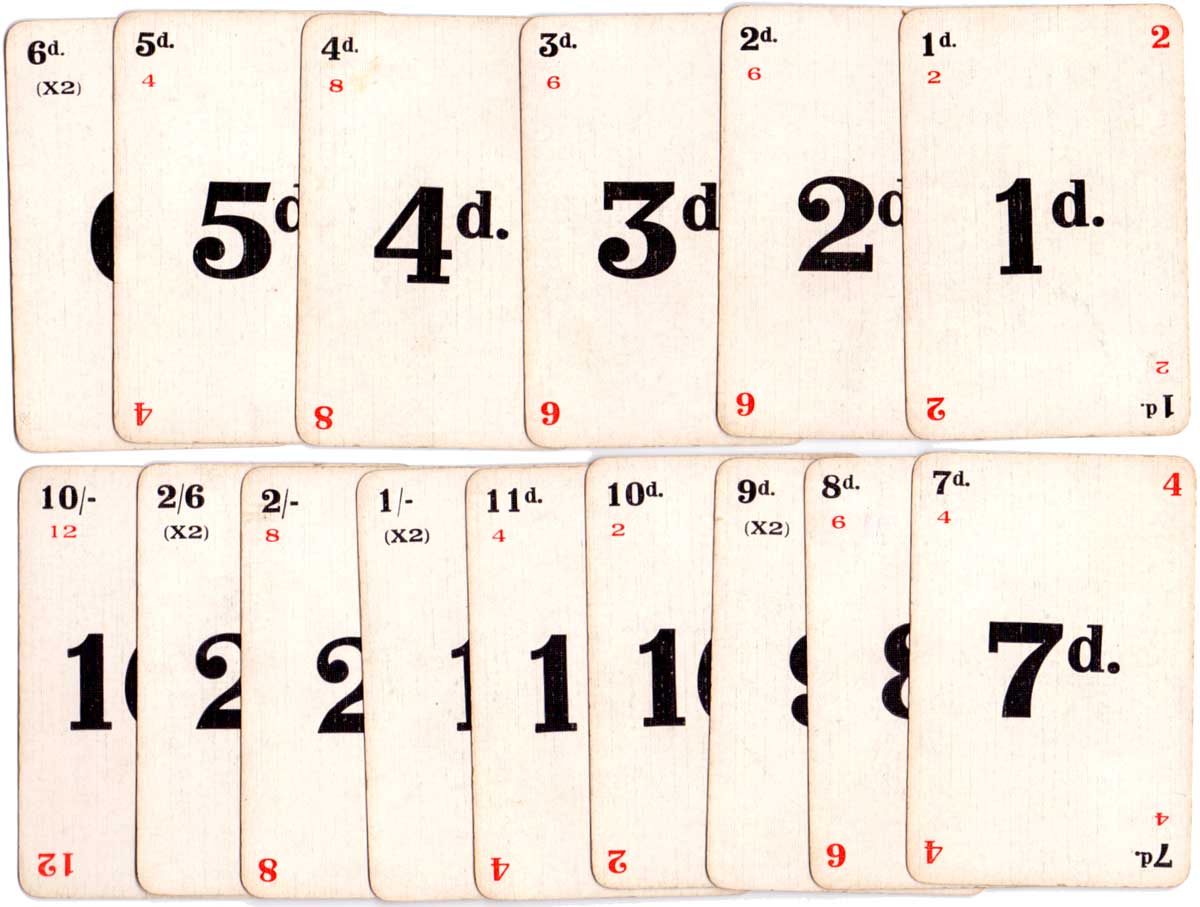
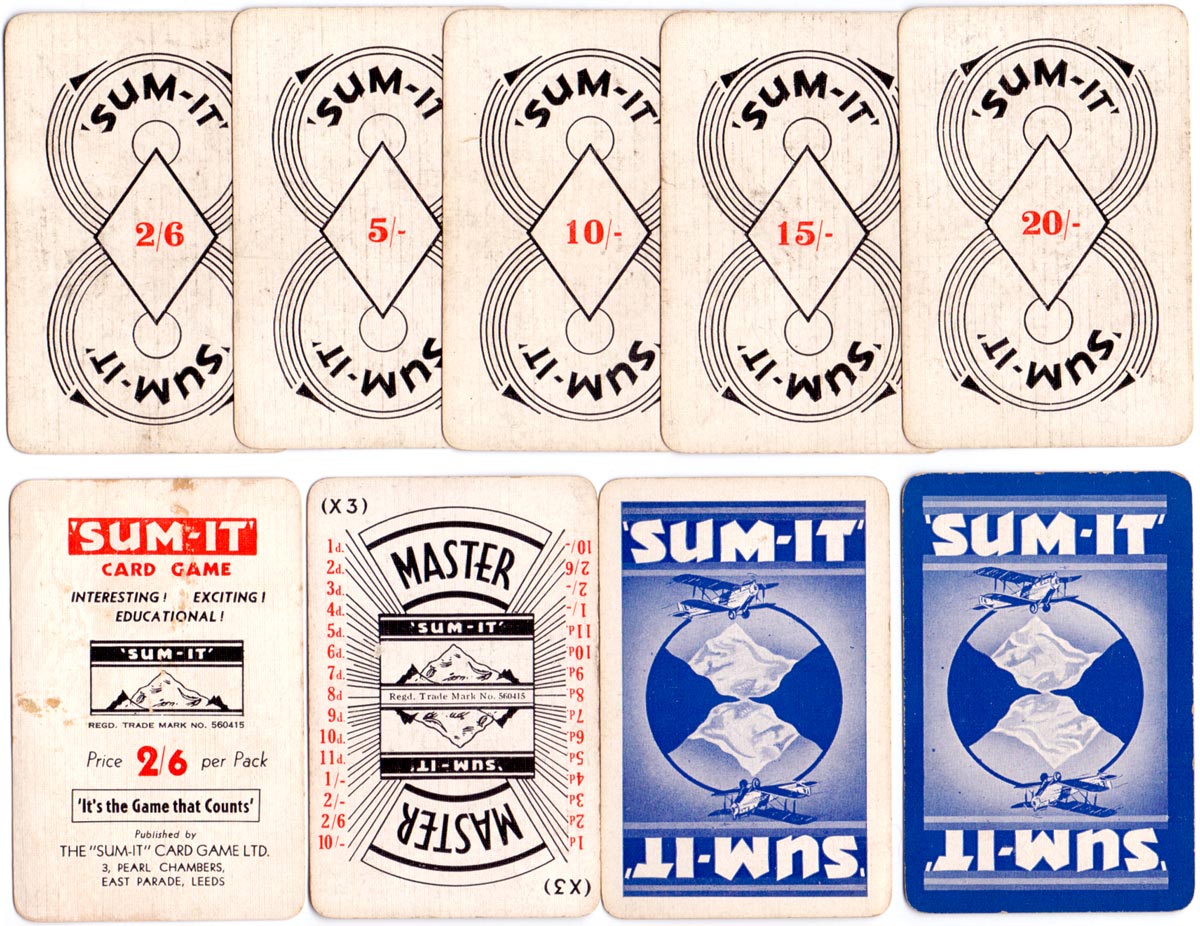
Above: ‘Sum-it’ published by Sum-It Card Games Ltd., c.1935. The game has 60 cards. Fifty-two cards represent different amounts of money. Eight cards are called ‘sum cards’ and represent a total sum of money. The object of the game is to gain seven cards which total one of the amounts on a sum card. This version uses the old pre-decimal currency system of pounds, shillings and pence. Later versions used decimal currency or a mixture of the two.
The scoring is based on a penalty system. The winner of each round incurs no penalty but the other players must sum the penalty scores on each card (the smaller red figures) in their hands.
The game has been published in hard or soft boxes and with red or blue backs.
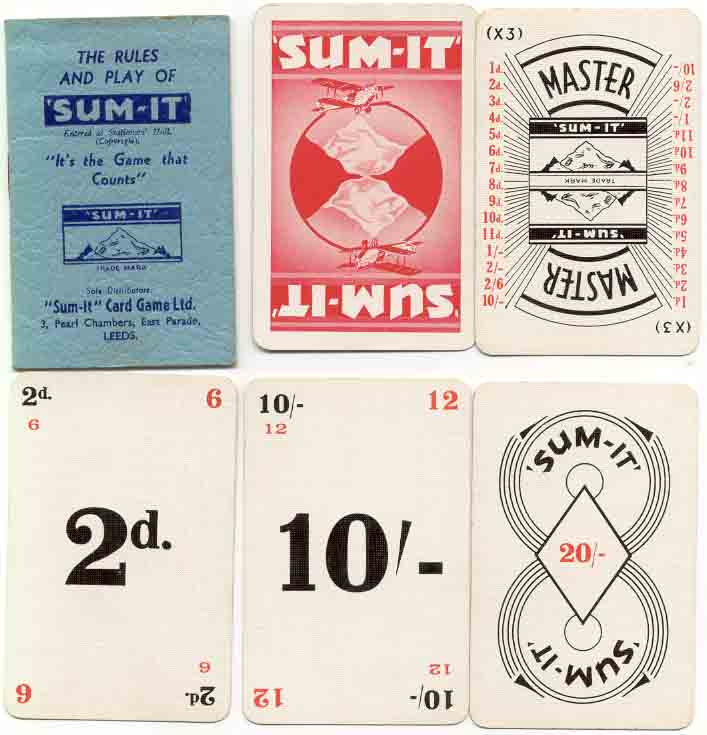
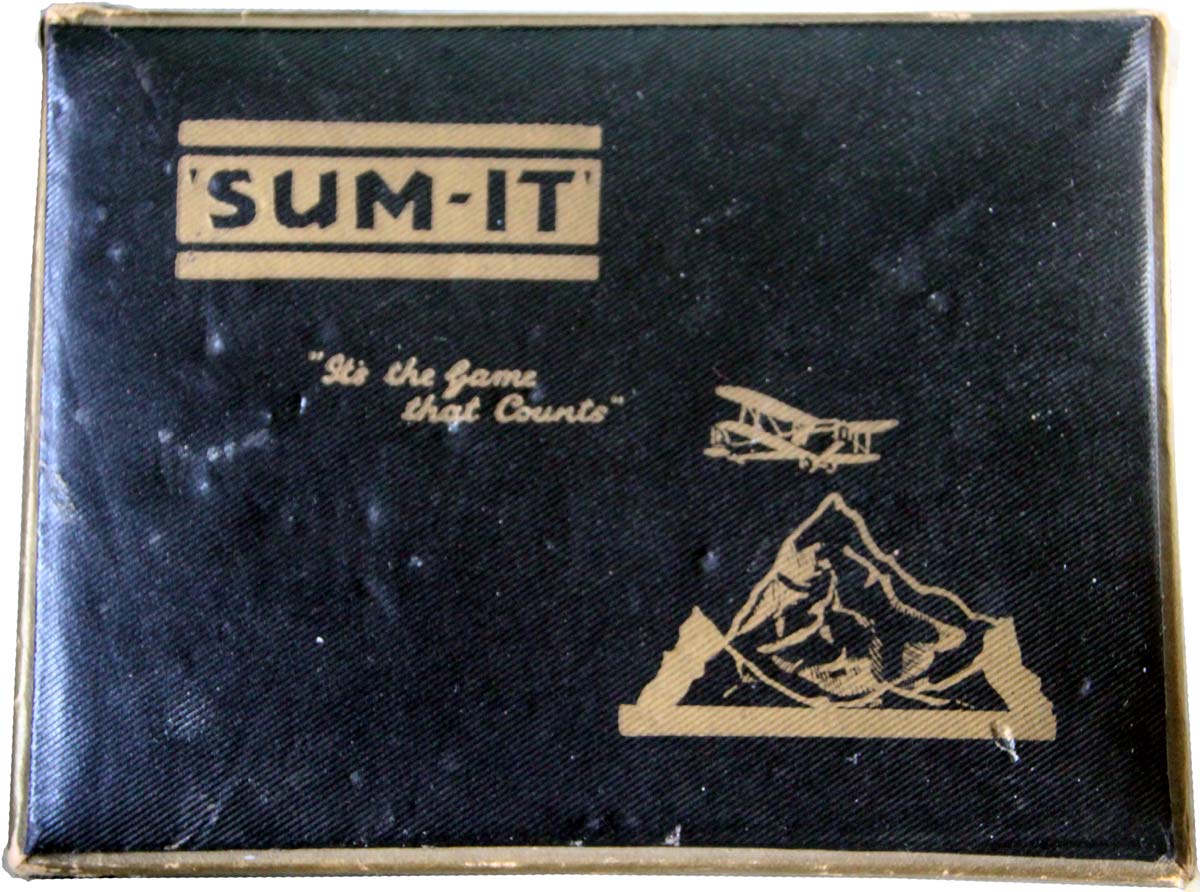
Above: double packs of ‘Sum-it’ contain one blue backed pack and one red backed with the same blue rules book. Image courtesy Rex Pitts.
By Simon Wintle
Spain • Member since February 01, 1996 • Contact
I am the founder of The World of Playing Cards (est. 1996), a website dedicated to the history, artistry and cultural significance of playing cards and tarot. Over the years I have researched various areas of the subject, acquired and traded collections and contributed as a committee member of the IPCS and graphics editor of The Playing-Card journal. Having lived in Chile, England, Wales, and now Spain, these experiences have shaped my work and passion for playing cards. Amongst my achievements is producing a limited-edition replica of a 17th-century English pack using woodblocks and stencils—a labour of love. Today, the World of Playing Cards is a global collaborative project, with my son Adam serving as the technical driving force behind its development. His innovative efforts have helped shape the site into the thriving hub it is today. You are warmly invited to become a contributor and share your enthusiasm.

Related Articles

Lend Me Five Shillings
or “Her Majesty’s Privy Purse” - a merry round-the-table game published by D. Ogilvy.
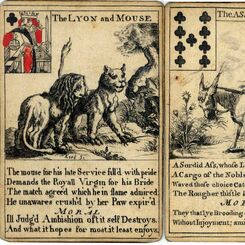
Aesop’s Fables
Aesop’s Fables playing cards by I. Kirk, c.1759.
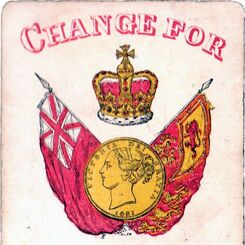
Change for a Sovereign
Change for a Sovereign published by J Evans & Sons and printed by Kronheim & Co.
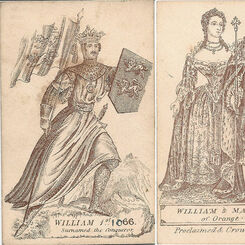
The Royal Historical Game of Cards
The Royal Historical Game of Cards invented by Jane Roberts and published by Robert Hardwicke, c.184...
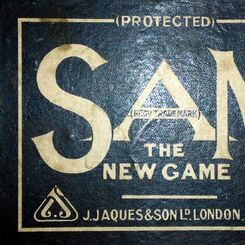
Sam
SAM by J. Jaques & Son Ltd.
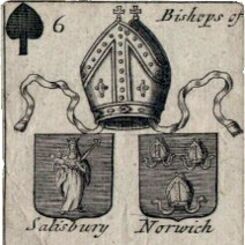
Arms of English Peers
The Arms of English Peers playing cards were first published in 1686. Heraldry, or a knowledge of th...
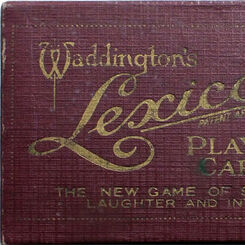
Lexicon
The summer of 1932 saw the introduction of Lexicon, when a small edition was produced and sold to te...
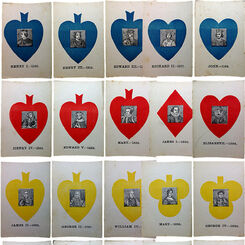
Quits
Jaques' Quits card game, c.1880-85, with portraits of monarchs inside suit symbols in red, blue and ...
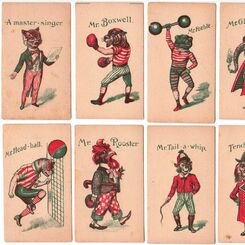
Animal Snap
The full set of this 'Snap' card game is believed to have 9 characters in sets of four, making a tot...
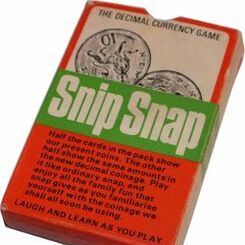
Snip Snap
Decimal Snap created by Eric Wagstaff, published by Michael Stanfield Holdings, London 1968.
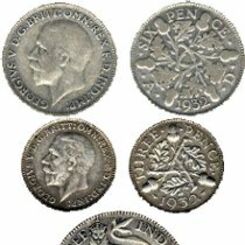
Change for a Shilling
Change for a Shilling card game by Geo. Wright & Co., London, c.1910-1926.
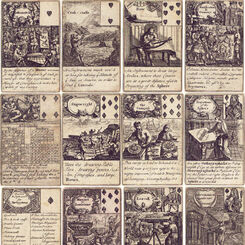
Mathematical Instruments
Mathematical Instruments playing cards forming an instrument maker's trade catalogue, Thomas Tuttell...

Kay Snap
Kay Snap Children's Card Game, made in England, 1930s.

Children's Card Games
Children's games are distinct from ordinary playing cards, the most obvious difference being the lac...
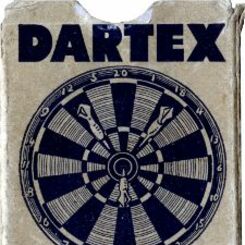
Dartex
Dartex, the Thrilling New Card Game of Skill (1938) based on the traditional pub game where darts ar...
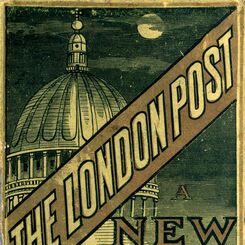
London Post
Jaques' The London Post Card Game, c.1895.
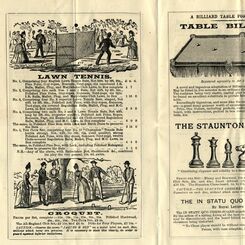
Jaques Advertising Leaflet
Jaques Advertising Leaflet showing Lawn tennis, Table Billiards, Staunton Chess, Croquet, etc.
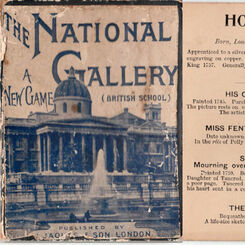
National Gallery (British School)
Jaques' The National Gallery Card Game, c.1895.
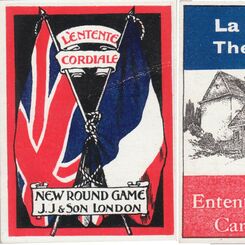
Entente Cordiale
Jaques' The Entente Cordiale Card Game, c.1905.
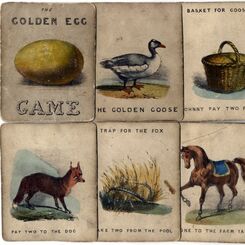
Golden Egg Game
The Golden Egg Card Game, anonymous manufacturer, c.1860
Most Popular
Our top articles from the past 60 days






















